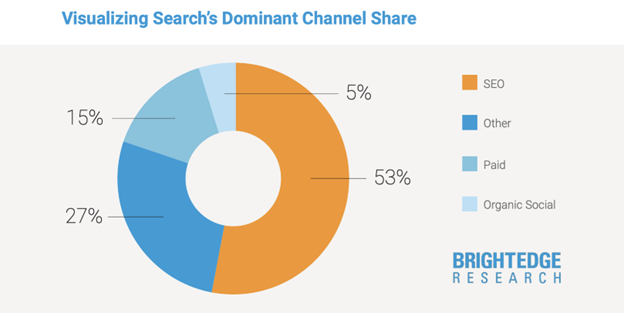
The internet allows you to have a wide reach. It’s so wide in fact that it can let you have a global audience. That’s in theory. How do you actually put that into practice? How do you actually reach as wide an audience as you can?
In this article, we will look into the best practices that you can use for ranking multilingual websites.
Why Have a Multilingual Website
Do you want to have a larger audience?
One solution is to have a multilingual website. This becomes even more relevant when you learn that 56% of users say that being able to get information about a product or service in their own language is far more crucial to them than price. Also, 73% of customers prefer to purchase from websites that offer information in their own language.
These numbers indicate the need for diversifying the language of your site. The majority of consumers do not buy from websites that are purely in English.
Those are just some of the reasons why you should consider making your website multilingual. Need more proof?
Having a multilingual website is good for international SEO. People are searching online using other languages. If your website is only available in English, you are ignoring a significant portion of your potential audience.
SEO for a Multilingual Website
So, how do you perform SEO for a multilingual website?
Optimizing a website for English is already a complicated task. It becomes doubly hard when you are optimizing for multiple languages.
Multilingual SEO is the practice of incorporating keywords in the other language versions of your site. The aim is to make your site rank for the keywords used in the other languages. It’s basically the same process used for optimizing in the English language.
By having different versions for your website, you are making it easier for your potential customers/clients to find you.
Why Translate Your Website to Rank in Other Regions?
Website translation is needed to rank for other regions because it focuses on the language of that market. It caters to the needs of the consumers there to have content in their own language. With search engines becoming more human-like in their approach to content, a site that caters to user needs is likely to rank.
There are tools available now that can help you when it comes to multilingual SEO. These tools can translate the content of a website automatically. But do you see the problem there? Automatic translation might sound good on paper but what about the results? Does the translation make any sense at all? A computer might not take into account the terms used by actual users. That can leave a disconnect between the translation and what actual users will say or write.
Translation, as performed by software, is fast improving. It is getting more and more accurate. But compared to human translation, translation through software still has a long way to go. The software translation output may not be very accurate at times. Context plays a role in the accuracy of translation and computers are not yet at that stage where they can figure out the context and adjust their translation accordingly.
To put it simply, website translation plays a vital role in multilingual SEO because of how important it is for user experience. The latest generation of website translators, combines certain aspects of SEO with UI/UX design for the best possible user experience.
The following are some of the tasks that website translation services providers can help with.
Keyword Research Strategy
Did you know that 92.42% of keywords get ten searches per month or fewer? That shows the need to identify the right keywords to focus on for your SEO strategy. Your optimization is only as good as the keywords you use. Pick one of those keywords that only get ten searches and your efforts go to waste.
This applies to international SEO. A website translation services provider can identify the actual search terms used by the target market in their language. That’s because their specialists know the actual language used by the users of the target language.
Landing Pages
The average conversion rate for landing pages is 9.7%. Just imagine what it can do for your business if your landing pages can achieve that. One way to hit and even exceed that conversion rate is by having the content in the language of your target market. Consumers generally trust businesses that can deliver content in their own language.
Product Descriptions
Consumers trust sellers who can provide product information in their own language. Consumers prefer that they get information about the product or service that they’re buying in their own language. It gives them more confidence in the merchant. As to whether they are correct to feel that way is another matter but that’s how consumers look at the language of what they are buying.
Best Practices for Ranking for Multilingual SEO
You should see the value of having a multilingual website now. The next step is to know some of the best practices for ranking multilingual websites.
Separate URLs
Each version should have a dedicated URL. If you have a French version it should have its own distinct URL and that should be the same for Spanish. That helps when making it rank.
Use One Language Per Page
You’re building a multilingual website but it does not mean you are going to use multiple languages on one page. That can be confusing not only to the users but also to the search engines. So, when you create a multilingual site, decide which language will you use on each page.
You want to build a website for your business, but you don’t know how. You’ve tried to learn how to code, but it’s too hard. You can try vert to build a website that looks good and works on every device. It’s easy!
Metadata Should Be Translated As Well
It’s not just the visible content on your site which must be worked on by the website translation services that you will hire. They also need to work on the metadata of the site which is crucial for a site to rank.
These are just some of the best practices for ranking a multilingual website today. If you have an international audience and market, you should really consider building a multilingual site and then conduct international SEO as part of your digital marketing strategy.





